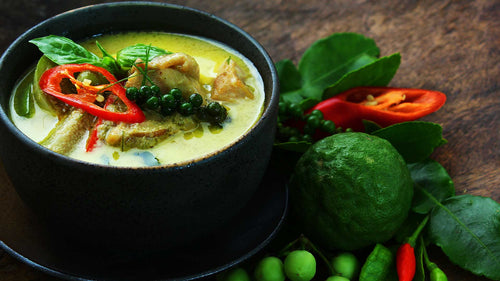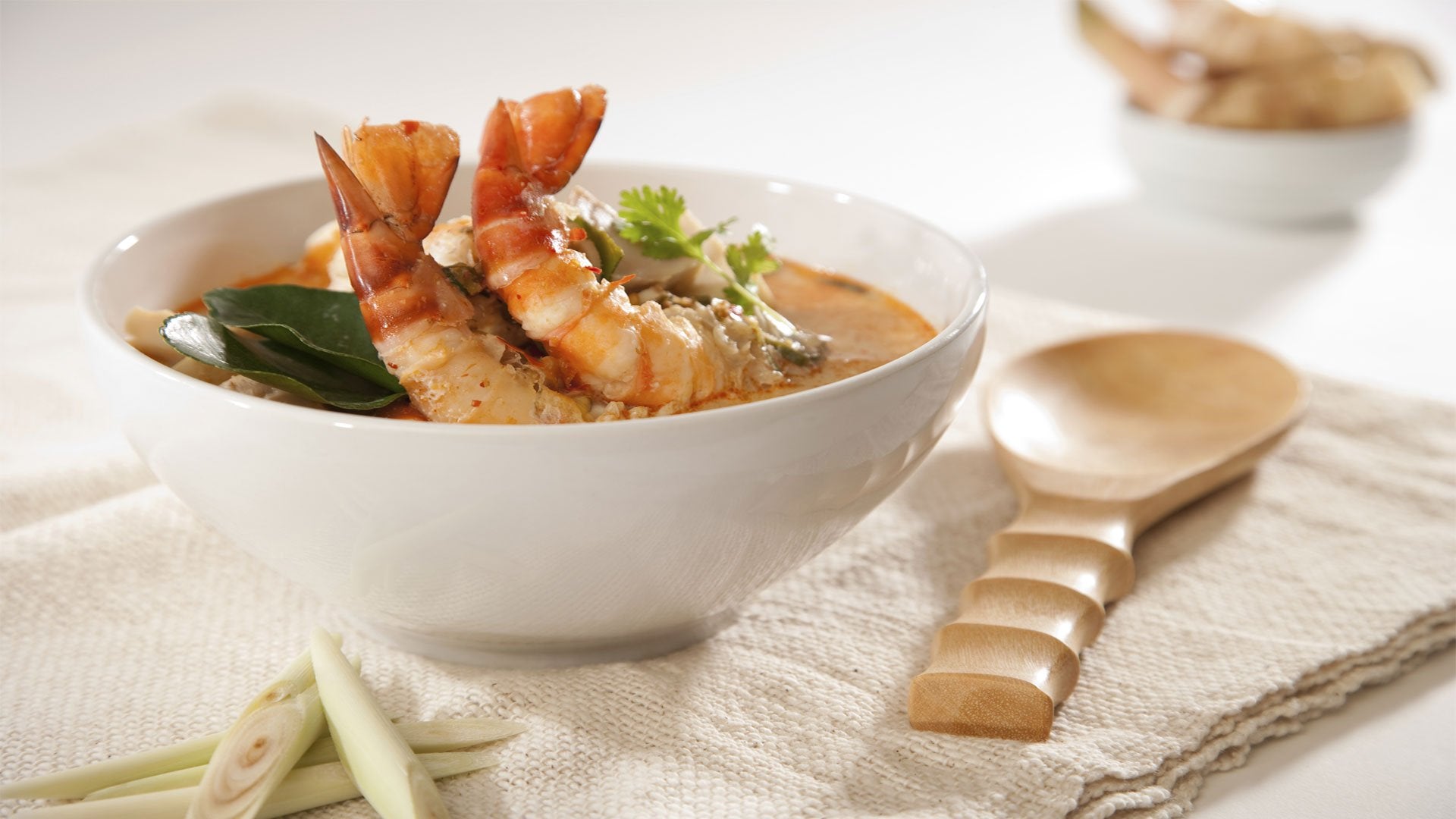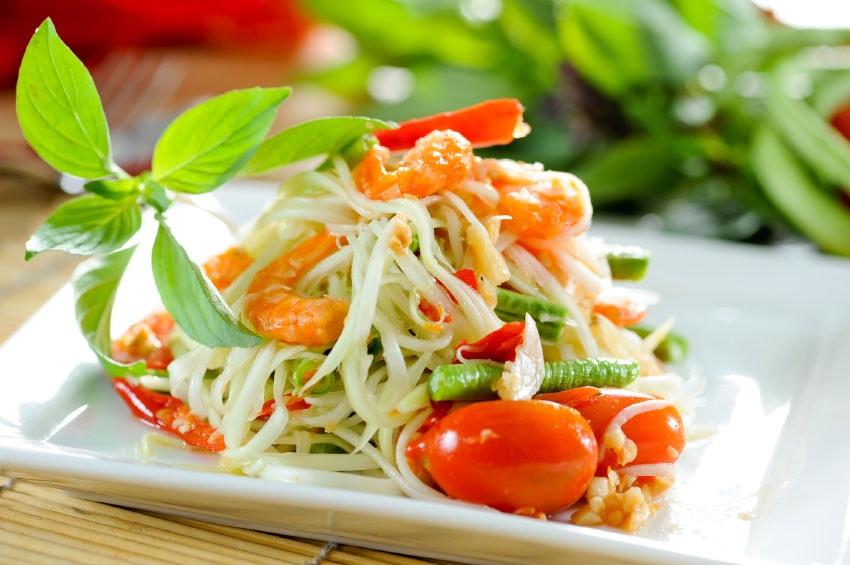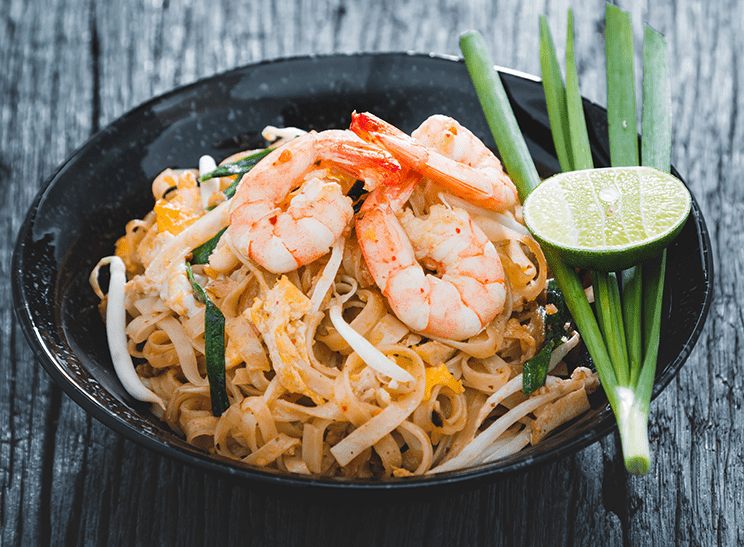Although most people are introduced to it when preparing homemade Tom Yum Soup, chilli paste is one of the most versatile and popular condiments used in Thai cuisine. Thai chilli paste is well known for its rich shrimp flavour (a key ingredient for an authentic paste), fiery spice and sweet taste. This makes it perfect for use in anything between stir fries to salad dressing and of course as a dip. In this blog, we’re sharing a quick guide to Thai chilli paste, our recommendations and some delicious ways to make the most of this ingredient in your recipes!
Type of Chilli Paste
The general term of Thai chilli pastes is ‘Nam Prik’ and there a wide variety of chilli pastes available in Thailand such as Nam Prik Ta Daeng which is on the spicier side of Thai chilli pastes and Nam Prik Pla Too which is enriched with the flavours of Mackerel fish. Each chilli paste has its own distinct ingredient which makes it unique from others when eating and cooking. The two main types of Thai chilli pastes we’ll be talking about however are Nam Prik Pao and Nam Prik Pla Yang which are a lot more accessible and readily available in the west.
- Nam Prik Pao (นำ้พริกเผา)
The most popular Thai chilli paste and used widely in restaurants for stir fry recipes. This chilli paste is the most versatile in terms of adding to recipes, using as a dip or spreading in sandwiches or on toast. You can also find this at street food vendors across Thailand. Key ingredients within this chilli paste include garlic, shallots, palm sugar and roasted chillies.
- Nam Prik Pla Yang (น้ำพริกปลาย่าง)
Grilled or smoked fish is one of the key flavours of Nam Prik Pla Yang and includes fish varieties such as shortfin, lizardfish and anchovy from the added flavours of fish sauce. This chilli paste is more savoury in taste and pairs well with rice recipes and cooked vegetables.
Homemade or Ready to Use?
One thing to note is that chilli pastes are also commonly made from scratch in Thailand. So arguably with all the right ingredients you could make the less common chilli pastes yourself from scratch; and the beauty in this is the bold and explosive flavours that can be achieved, however, this isn’t always the most convenient way to enjoy chilli paste and when a recipe is already time-consuming, it’s great to find ready made options that help you save the effort.
Nam Prik Pao and Nam Prik Pla Yang are also popular across the west because of the way they compliment western palettes. They are more sensitive to lower heat tolerance levels and generally have sweeter, less fishy flavours compared to other varieties. Of course this depends on the specific chilli paste, they all differ slightly in terms of ingredient ratios which might suit various preferences. Some like their chilli paste sweeter, others prepare it to have a strong shrimp flavour. Below are some of our recommendations for which chilli paste to go for depending on your taste buds.
.
Mae Pranom - Nam Prik Pao (228g) - For an all-rounder
- Medium spice level with 10% dried chillies
- Has a delicious full bodied shrimp flavour without being too strong
- Good balance of ingredients to use flexibly in stir fries, soup, salads and spreading
Mae Ploy Chilli Paste in Oil (400g) - For a sweeter taste
- A sweeter and less spicy chilli paste with less than 5% chillies
- Lower fish content than most other Thai chilli pastes
- Great option to add to Asian soups or in Thai fruit based salads such as Pomelo Salad
Maesri Pla Yang Chilli Paste (200g) - For a spicy fish-flavours
- Infused with the distinct fish flavour
- Ideal for use in savoury recipes or paired with rice and vegetables
- High heat level with 22% dried chillies
6 Great Uses of Thai Chilli Paste
- Add them to Asian soups such as Thai Tom Yum, Korean dakgaejang or Chinese hot pots.
- Spread it into sandwiches or on toast, sweeter chilli pastes make a good alternative to chilli jam while savoury pastes make for good toast toppings combined with other ingredients.
- Use chilli pastes alone or with other dried spices to marinade meats
- Pla Yang chilli pastes are great for enhancing the flavour of fish as a marinade.
- Mix chilli pastes with avocado, mayonnaise or sour cream for a delicious dip
- Similar to marinating fish or meat, you can use chilli paste to add flavour to vegetables when roasting.










Leave a comment